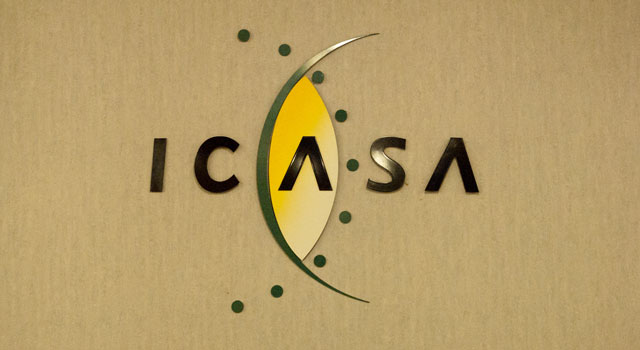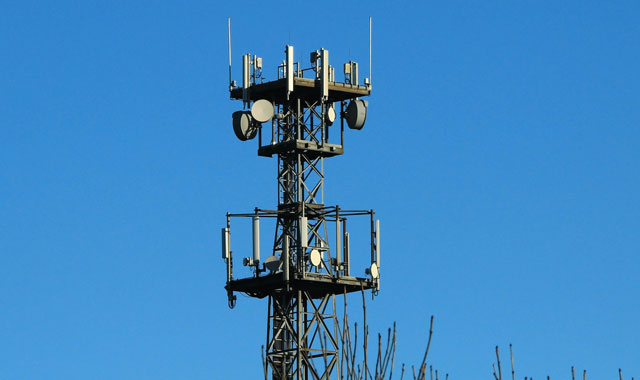
Communications regulator Icasa took everyone by surprise on Friday when it said it was pushing ahead with an auction to allocate wireless broadband spectrum in the 700MHz, 800MHz and 2,6GHz bands.
The auction is likely to attract only big players, with a R3bn reserve price for each of four lots of spectrum to be made available to commercial operators.
But how will the auction work exactly?
In its invitation to apply, Icasa said it has chosen a simultaneous multiple round auction (SMRA). According to Steve Song, an expert in spectrum matters and a former fellow of the Shuttleworth Foundation, an SMRA is the oldest and best known form of spectrum auction. In a post on his website, Song explained that in an SMRA, multiple lots of spectrum are auctioned simultaneously in a series of rounds.
“In this case, an individual lot refers to a specific frequency band in a specific geographic area. An auction would typically have multiple frequency bands available in multiple regions. An SMRA is dependent on the regulator allocating the specific frequency lots prior to the auction so the bidders know exactly which chunk of spectrum in which geographic region they are bidding on,” he said.
“Each round of bidding sets the standing high bid for each lot and the rounds continue until there is no excess demand,” Song added.
“The great strength of this auction type is that it is comparatively simple and well understood by all. This facilitates speed in organising the auction as well as maximising the chance of participation.”
Unfortunately, SMRAs also have drawbacks, Song said. The predetermined nature of the spectrum lots can lead to inefficiencies where some bidders may end up with non-contiguous blocks of spectrum. This may happen inadvertently or it may be a result of predatory bidding by competitors, he said.
The auction location will be electronically surveyed by means of audio and video equipment. The surveillance will not include the interior of the private bid rooms, but access ways to the bid rooms will be monitored
“There is also the danger of prices going unnecessarily high, with the winning bid paying significantly more than would have been required to win, the so-called ‘winner’s curse’.”
There is also a danger of tacit collusive behaviour on the part of bidders where an informal understanding among bidding entities may result in lower bid prices as each company targets a spectrum band that is understood to be theirs.
Auctions designers have introduced rules into SMRA auctions that make this more difficult but it remains a risk, Song said.
First, though, interested companies must qualify to take part in the auction. Requirements include having a telecoms service licence in South Africa – a fairly trivial requirement – and must have 30% of their equity in the hands of historically disadvantaged groups.
The closing date for receipt of applications is Monday, 3 October, at 3pm.
Multiple rounds
The auction is expected to take place in January 2017 and may consist of one or more rounds. It will continue until there is a round in which no new bids are placed and no waivers are used, Icasa explained in its invitation to apply.
In each round, bidders will have the opportunity to place bids on any of the available spectrum lots, providing those bids do not break activity rules and spectrum caps. For more details about the available spectrum lots, see R3bn reserve price in spectrum auction.
Before each round begins, Icasa will tell all bidders the standing high bid and standing high bidders amount on each lot, as well as the price options available for each lot that can be bid on in that round.
Each bidder (other than bidders which have already withdrawn from the auction) is invited to submit one bid entry form stating on which lots it wishes to place a bid, and selecting exactly one price option for each lot.

If a bidder wishes to submit a bid, it is free to choose which lots to bid for, subject to eligibility, spectrum caps and the lot categories on which they have qualified to bid.
However, a bidder is not permitted to bid on lots on which it is currently the standing high bidder.
Instead of submitting a bid, a bidder may use a waiver, submit a “no bid” bid (see 130 for further details) or actively withdraw from the auction.
Each round will end after the allotted round time has expired, regardless of whether all bidders have submitted bids.
Once the round is finished, the new standing high bidders and standing high bid amounts will be determined, based on the highest bid placed on each lot.
If one or more lots have received bids from multiple bidders of value equal to the maximum bid value of the round, the standing high bidder will be selected by means of a tie-break.
Each bidder that placed a bid equal to the maximum bid for the lot will have an equal chance of being selected as the standing high bidder. The status of standing high bidder on a particular lot is maintained until another bidder places a bid for that lot in a subsequent round at a higher price.
For each round, Icasa will specify four bid amount options which may be placed on each lot. The bid amount options for each lot will be decided by Icasa.
If a bidder fails to submit a valid bid before the end of the round, and has no remaining waivers, it will automatically be withdrawn from the auction
The percentage increments (the difference between the standing high bid amount and the bid amount options) for all rounds will be communicated to all bidders at the end of the day.
Bid increments will be in the range of 1% to 20% of the standing high bid on each lot. Bid Increments will not necessarily be the same for all lots (in percentage or absolute terms). Bid amount options will be rounded up to the nearest R100 000.
In each round, a bidder will receive a certain eligibility, based on its initial bid and activity in the previous round. In the first round, a bidder’s eligibility is equal to its activity in its initial bid. (A bidder’s eligibility describes the maximum of lots on which it may place bids in the current round, while a bidder’s activity describes the number of lots on which it is either standing high bidder or places a new bid on in the current round.)
The sum of the activity points of each lot on which a bidder places a bid in a round, combined with the activity points of lots on which the bidder is standing high bidder, defines the total activity of the bidder within the round.
Eligibility in the following round is set equal to the bidder’s activity in the current round. Thus, it is not possible for a bidder’s eligibility to increase.
If a bidder is standing high bidder on lots which have a combined activity points level equal to the bidder’s eligibility for the round, it must submit a “no bid” bid, to identify that it does not wish to use a waiver.

If a bidder submits a “no bid” bid when it is standing high bidder on lots which have combined activity points of less than the bidder’s eligibility, then its eligibility will reduce for the next round.
The use of a waiver, meanwhile, allows a bidder to maintain its eligibility in the next round without submitting a new bid in the current round. Each bidder is allowed a maximum of six waivers during the auction.
In any round, a bidder may choose to submit a waiver in place of any new bids on lots, provided it has at least one waiver remaining, and has not withdrawn from the auction.
If a bidder is standing high bidder on any lots when it uses a waiver, it will remain standing high bidder unless another bidder places a bid of greater value on those lots.
When a waiver is used, the bidder retains the same level of eligibility for the next round as it had in the current round.
If a bidder does not submit a valid bid before the end of the round, then a waiver is automatically used for that round, provided the bidder has a waiver remaining.
Withdrawal
In any round, bidders have the opportunity to withdraw from the auction.
If a bidder chooses to submit a withdrawal, it will no longer be eligible to submit bids in the auction. It is not possible for a bidder to submit bids and a withdrawal in the same round.
If a bidder withdraws while it is standing high bidder on any lot, it will remain standing high bidder until another bidder places a higher bid on that lot. As a result, it is possible for a bidder that has withdrawn to win lots which it had bid on before the withdrawal, provided no other bidders place further bids on those lots.
If a bidder fails to submit a valid bid before the end of the round, and has no remaining waivers, it will automatically be withdrawn from the auction.
For submitted bids to be successful, the Activity points associated with the bid must not exceed the bidder’s current eligibility. Also, the bid must not exceed the spectrum caps.
Icasa expects to run between three and six rounds on each day, with a minimum time gap of 20 minutes between rounds
The auction will close once a bid round has been completed in which no new bids were placed (excluding “no bid” bids) and no waivers were used. Once the auction has closed, the standing high bidders on each lot will be designated the winners of those lots.
The auction will take place in Johannesburg, with all bidders co-located in the same building. The exact location of the auction will be communicated nearer to the auction date. Each Bidder will be provided its own private room in which it may make its bid decisions.
Bids will be submitted in a public room, with bid entries placed in a bid box.
During the auction, the auction location will be electronically surveyed by means of audio and video equipment. The surveillance will not include the interior of the private bid rooms, but access ways to the bid rooms will be monitored.
The general public will not have access to any part of the auction location.
Rounds will be scheduled between 9am and 5pm on business days only. The last round of the day will start prior to 5pm. Icasa expects to run between three and six rounds on each day, with a minimum time gap of 20 minutes between rounds.
Once the round has ended, bids will be opened in the public area. Each bid entry form will be presented in front of all representatives in the room. After all bids have been announced, the bids will be assessed to determine which bidder becomes the standing high bidder on each lot, and the associated standing high bid. If needed, tie-breaks will take place in the public area.
At the end of each bidding day, Icasa will publish the current standing high bidders and standing high bids.
It said it expects to issue the spectrum licences to successful bidders in March 2017 or thereabouts. — © 2016 NewsCentral Media




